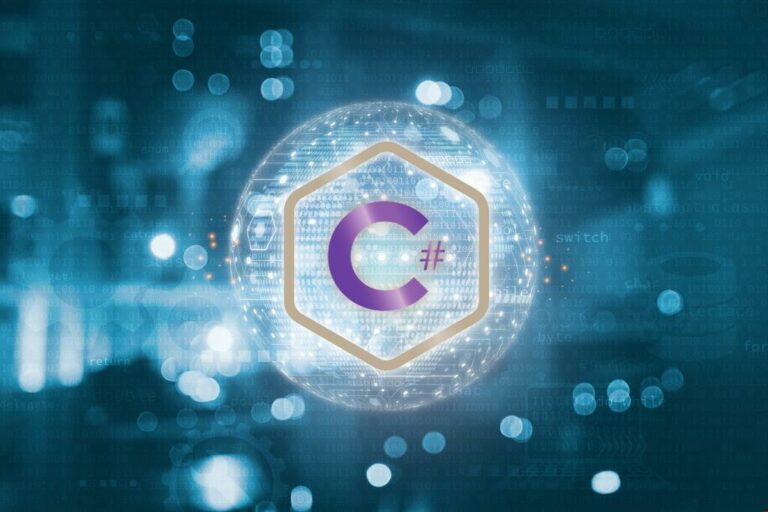Software development
What is Team Development and its 5 Stages Explained
Content
- Using the Stages of Team Development
- Storming — It’s inevitable, there’s going to be conflict
- Find our PMP® Certification Training Online Classroom training classes in top cities:
- Simplilearn Wins Top 20 Online Learning Library Companies of 2017
- What is Team Development?
- Adjourning — Success! You made it
- The Lencioni Model
- Team Development & Leadership?
Use this exercise at the end of a project or program as a way to reinforce learnings, celebrate highlights and create closure. This is a structured process designed for teams to explore the way they work together. The tight structure supports team members to be open and honest in their assessment.
During the Storming stage, team members may argue or become critical of the team’s original mission or goals. Team effectiveness is enhanced by a team’s commitment to reflection and on-going evaluation. In addition to evaluating accomplishments in terms of meeting specific goals, for teams to be high-performing it is essential for them to understand their development as a team. For example, if your team is in the norming phase, you know that you need to work on setting clear expectations and building trust between team members.
Using the Stages of Team Development
When teams work in the same space, it’s easy to see what everyone’s doing. Designers are talking to product managers to get direction, or product managers meet with analysts to talk about user data and reports. It’s different for remote marketing teams because you can’t see what people are working on. To remedy this problem, put processes in place that make it easy for designers, for example, to see how content is developing so that they can anticipate when they’ll be able to complete their updates.
When the team has settled into the performing stage, you can focus on other goals and new areas to benefit the business. Free up more time for yourself – and boost team engagement – by delegating tasks and projects. This step was added to the existing model of group development by Tuckman in 1977. An activity to support a group to get to know each other through a set of questions that they create themselves. The activity gets participants moving around and meeting each other one-on-one.
Frustration or conflict can arise if the group doesn’t agree on or understand the reason for the team’s existence and how success will be measured. Being sure the team is aligned on team goals early on means that you can develop as a group swiftly and efficiently. Leaders first seek to understand team competence and commitment level to adjust their leadership style and behaviour. Consider this following situational leadership grid and notice different leadership styles at different team development phases/stages.

They share insights into personal and group process and are aware of their own (and each other’s) strengths and weaknesses. Members feel attached to the team as something “greater than the sum of its parts” and feel satisfaction in the team’s effectiveness. Members feel confident in their individual abilities and those of their teammates.
Storming — It’s inevitable, there’s going to be conflict
According to Psychologist Bruce Tuckman, a team typically progresses through various stages in their overall performance. In 1965, he described the phases of team development as forming, storming, norming, and performing. He later added the final stage of adjourning, also known as mourning. Since then, Tuckman’s model has remained relevant both in the context of the program and project management – whether Waterfall or Agile. The agile approach places significant emphasis on empowered teams, and we discussed some of the facets of such self-organizing teams in one of the previous articles.
That said, without direction and consideration, this process can be time-consuming, messy, or even frustrating and alienating for some team members. For an alternative model of group development see the Punctuated Equilibrium Article. This can be https://globalcloudteam.com/ done in a number of ways including psychometric profiling – MBTI, TMS etc there are many tools available. Selection should not be the based wholly on a profile but it is very useful when trying to choose between equally competent candidates.
Find our PMP® Certification Training Online Classroom training classes in top cities:
Finally, share the project roadmap so the team can see the starting point, the proposed check-in points, and the end goal. This gives them insight into the bigger goal but also breaks down the timeline into smaller increments. Finally, once all members have learned how to cooperate effectively, the team performs better than ever before.
- In what stage of the Tuckmans model do you think your team is in?
- Bruce Tuckman presented a model of five stages Forming, Storming, Norming, Performing and Adjourning in order to develop as a group.
- The Five Dysfunctions of a Team Model outlines the root causes of politics and dysfunction on the teams where you work, and the keys to overcoming them.
- Motivation is important to ensure that individuals operate on a basis of commitment rather than compliance, illustrated by the Y model.
- In the Performing stage of team development, members feel satisfaction in the team’s progress.
Use Tuckman’s model to continually review where you team is at – and make any necessary changes to get back on course. Get your team to bond further with face-to-face or virtual team-building exercises. These social connections are especially important right now, as more of us work from home. To avoid louder individuals dominating face-to-face or virtual team meetings, ask for, and hear, everyone’s point of view. People start to resolve their differences, appreciate one another’s strengths, and respect your authority as a leader.
Simplilearn Wins Top 20 Online Learning Library Companies of 2017
Team members are able to prevent or solve problems in the team’s process or in the team’s progress. A “can do” attitude is visible as are offers to assist one another. Roles on the team may have become more fluid, with members taking on various roles and responsibilities as needed. Differences among members are appreciated and used to enhance the team’s performance. The best teams understand that managing conflict is not the same as minimizing conflict. The team members cultivate the necessary courage to raise difficult issues, while developing effective ways to work through disagreements and find solutions.
Create an agenda and establish a document to track ideas and comments during the meeting. Share a link to these meeting notes afterwards so that everyone has access and can review it later. Organize the agenda so that each team member has five to ten minutes to talk through their insights and ideas. Allow extra time to review the ideas the team shares and to answer questions.
Imagining the future of claims adjusting through instructional design – Chief Learning Officer
Imagining the future of claims adjusting through instructional design.
Posted: Tue, 08 Nov 2022 12:11:16 GMT [source]
Though this may sound easy on paper, balancing individual and common goals within a team is quite difficult, especially during periods of stress, failure, or discord. Attend a public Team Performance workshop or have The Grove run a workshop within your organization, virtually or in person. You will learn The Drexler/Sibbet Team Performance Model and our essential practices and tools for team development and improvement.
Having fun together can be an often overlooked element of team development. Seeing your colleagues as more than their job roles is something that should happen in the early stages of the Forming process but it’s important to keep engaging these muscles. Even as a team improves in performance, it’s vital to keep improving and engaging these skillsets in the name of better cooperation and team development. It seems very neat to define the stages of team formation and development; however, each team is different, and the team development model may not be as linear as it appears. Several factors come into play like – past experiences, previous working relationships etc. And interestingly, at times, teams do not progress through the stages as a whole unit.
What is Team Development?
Team Development ModelIn the forming phase, the team typically starts with a collection of people as a group/bunch to work on the same project. The team then progresses to the storming phase – where they start to compete and challenge each other. Then comes norming phase – when the team learns how to work together and get stuff done. And thereafter, finally, the team may attain or reach the performing phase – when the trust is at its peak, and they act as one. In my previous article, I wrote about team dynamics and dysfunctions, taking that discussion further, I will explore stages of team development. And suggestions for leaders on how to build a highly efficient, high-performing, happy team.

It is highly likely that at any given moment individuals on the team will be experiencing different emotions about the team’s ending. As the team begins to move towards its goals, members discover that the team can’t live up to all of their early excitement and expectations. Their focus may shift from the tasks at hand to feelings of frustration or anger with the team’s progress or process. Members may express concerns about being unable to meet the team’s goals. During the Storming stage, members are trying to see how the team will respond to differences and how it will handle conflict. The principal work for the team during the Forming stage is to create a team with clear structure, goals, direction and roles so that members begin to build trust.
Adjourning — Success! You made it
Team members may feel a variety of concerns about the team’s impending dissolution. They may be feeling some anxiety because of uncertainty about their individual role or future responsibilities. They may feel sadness or a sense of loss about the changes coming to their team relationships.
Roles and relationships are now established, freeing people up to concentrate on exercising the talents that got them into the team in the first place. This is the time when curt e-mails written in the heat of the moment should be left to cool overnight in the drafts box before being reviewed and moderated in the morning. There is a danger of factions forming and some members becoming isolated, particularly in today’s era of virtual teams in far flung places. Progressively, intra-group communication of the team takes on a clearer structure. Crucially team members are reflective of their behaviors that led or lagged the team’s performance. Roles and responsibilities are in place, stability is felt by all.
Team Development & Leadership?
One tool for this is the TMSDI Team Performance Profile – a 360 degree profiling tool which can be repeated throughout the life of the project team and used in conjunction with the Five-Stage four stages of team development. Involving key stakeholders in this process has proven to be an excellent method for Stakeholder engagement. For conventional work groups, performing is the last stage of their team development.
Everyone works together smoothly and efficiently towards achieving shared objectives. You know you’re ready to move into the next stage when you no longer hear anyone complain about working with other team members. During the Ending Stage, some team members may become less focussed on the team’s tasks and their productivity may drop. Alternatively, some team members may find focussing on the task at hand is an effective response to their sadness or sense of loss. As a leader, the performance of the team is instrumental in achieving business results, and supporting the organizations growth into the future.
